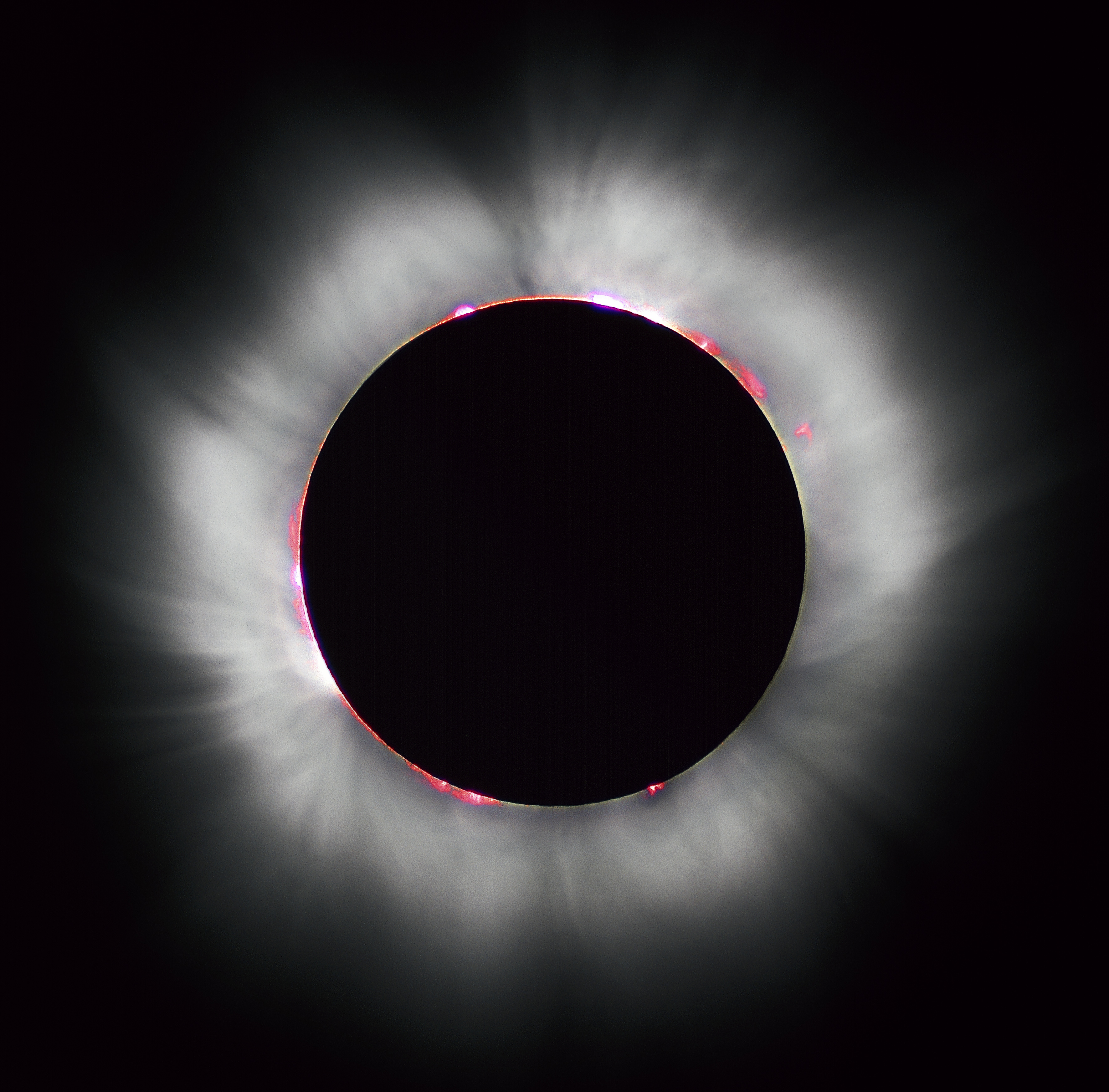|
Solar Eclipse Of May 29, 1919
A total solar eclipse occurred on Thursday, May 29, 1919. With the duration of totality at maximum eclipse of 6 minutes 50.75 seconds, it was the longest solar eclipse since May 27, 1416. A longer total solar eclipse would later occur on June 8, 1937. As it occurred only 0.8 days after perigee (May 28), the Moon's apparent diameter was larger. It was visible throughout most of South America and Africa as a partial eclipse. Totality occurred through a narrow path across southeastern Peru, northern Chile, central Bolivia and Brazil after sunrise, across the Atlantic Ocean and into south central Africa, covering southern Liberia, southern French West Africa (the part now belonging to Ivory Coast), southwestern tip of British Gold Coast (now Ghana), Príncipe Island in Portuguese São Tomé and Príncipe, southern Spanish Guinea (now Equatorial Guinea), French Equatorial Africa (the parts now belonging to Gabon and R. Congo, including Libreville), Belgian Congo (now DR Congo), nort ... [...More Info...] [...Related Items...] OR: [Wikipedia] [Google] [Baidu] |
Solar Eclipse
A solar eclipse occurs when the Moon passes between Earth and the Sun, thereby obscuring the view of the Sun from a small part of the Earth, totally or partially. Such an alignment occurs during an eclipse season, approximately every six months, during the new moon phase, when the Moon's orbital plane is closest to the plane of the Earth's orbit. In a total eclipse, the disk of the Sun is fully obscured by the Moon. In partial and annular eclipses, only part of the Sun is obscured. Unlike a lunar eclipse, which may be viewed from anywhere on the night side of Earth, a solar eclipse can only be viewed from a relatively small area of the world. As such, although total solar eclipses occur somewhere on Earth every 18 months on average, they recur at any given place only once every 360 to 410 years. If the Moon were in a perfectly circular orbit and in the same orbital plane as Earth, there would be total solar eclipses once a month, at every new moon. Instead, because the ... [...More Info...] [...Related Items...] OR: [Wikipedia] [Google] [Baidu] |

